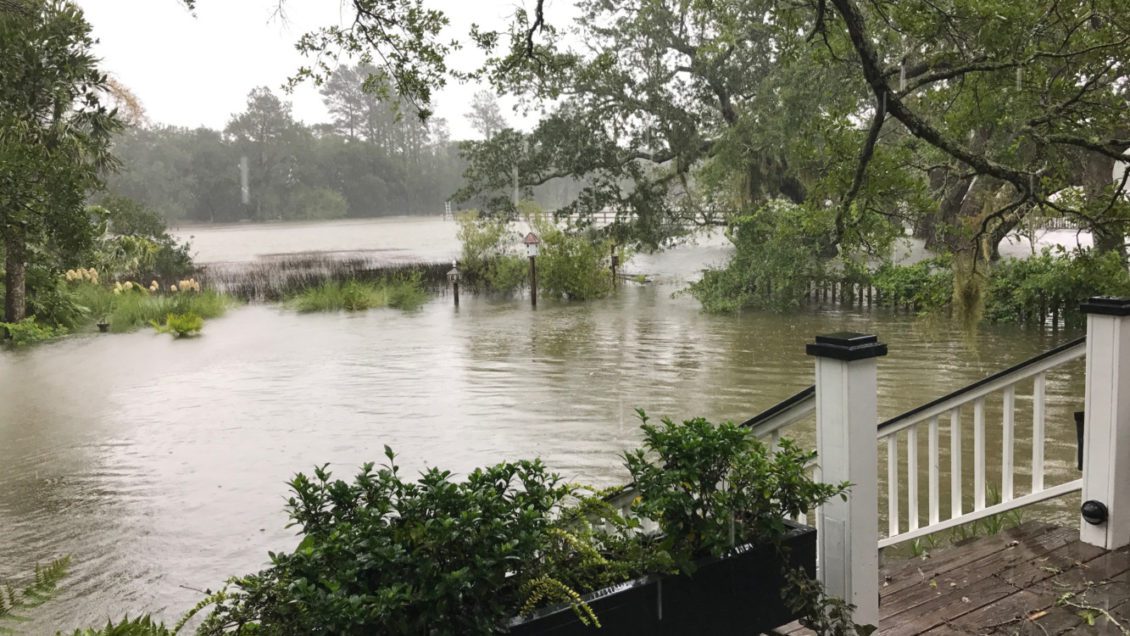CLEMSON — The 2019 Atlantic hurricane season begins June 1 and Clemson horticulture agents have a few tips for South Carolina gardeners and homeowners to use to protect their landscapes from the havoc of wind and flooding.

Chris Burtt, a Clemson University Cooperative Extension Service horticulture agent in Charleston, said trees are the main plants to watch.
“Dead or diseased limbs or trees become safety issues when severe weather hits an area,” Burtt said. “Limbs can become detached from a tree and can cause damage or harm to people, as well as property. Diseased trees also can fall or break.”
To keep trees from becoming hazards during storms, they should be properly planted and maintained. Trees also should be inspected for defects at least twice a year.
“Property owners need to look for defects that could allow strong winds to cause branch or trunk failures,” said Bob Polomski, Clemson Extension horticulturist. “Trees with defects should be removed by the property owner rather than by the storm. People need to pay particular attention to mature trees, as the risk of wind-induced failure increases with age. Also, trees planted in groups tend to tolerate strong winds better than individual trees.”
No tree is wind-proof and factors such as soil condition, wind intensity, tree health, tree architecture and age all factor into wind resistance. Well-pruned trees survive hurricanes better than poorly pruned or unpruned trees. Ideally, “pruning for strength” should begin when trees are young. This “structural pruning” strategy focuses on establishing a limb framework that offers the strongest possible wind resistance. Topping or “hat-racking” makes trees susceptible to wind failure.
For property owners who are not confident inspecting trees themselves, Polomski recommends reaching out to a certified arborist credentialed by the International Society of Arboriculure by visiting www.isa-arbor.com.
If a storm causes flooding, Gary Forrester, Clemson Extension environmental horticulturist and Master Gardener coordinator for Horry County, advises people to exercise patience and not rush out to repair their landscapes.
“The first thing to remember is allow the landscape to dry,” Forrester said. “If homeowners begin working soil while it is still wet, they can do further damage to the soil structure, especially soils high in clay content.”
To help soils dry, remove as much debris and mulch as possible from around plants to allow sunlight to get in.
“Use an air spade or vertical mulching to circulate air throughout the root system,” Forrester said. “Do not perform any remedial pruning until you are sure the limbs you are removing are dead. It may be better to wait until spring to see where new growth emerges and then prune out dead material.”
When replacing trees, Forrester said to keep in mind plant species that have been found to survive floods, including red maple, red buckeye, river birch, American hornbeam, hickory, ash, loblolly bay, holly, sweetgum, sweetbay magnolia, wax myrtle, tupelo, various oak species, weeping willow, pond cypress and elm.
Landscapes and vegetable gardens after the storm
Excessive rainfall also can cause problems for other plants and lead to plant stress and loss.
Forrester said the degree to which plants are damaged following a flood depends on several factors, including the amount of water and time plants were covered, the species of plants and soil texture. Plants can be affected by contaminants in floodwater, such as petroleum products, raw sewage or pesticides.
If plants have been covered by water for an extended time, several things can happen: yellowing or brown leaves, leaf curling, wilting, reduced leaf size, early leaf drop and defoliation with gradual decline and death of the plant. These symptoms and stresses can occur even when plants have not been covered by water but have been sitting in saturated soils for an extended period of time.
Flooding can cause issues for soils as well.
“Soils that have been flooded for an extended period will be severely compromised,” Forrester said. “The soil biology will need to be restored and enhanced.”
If soil smells rotten or has a sulfur, rotten egg smell, microbes that live in oxygen-free environments are prevalent. The soil will need to dried and aerated. Adding soil conditioners or biological enhancers will help restore soil health. For information on Aerating Lawns, read Clemson’s Home and Garden Information Fact Sheet 1200.
If contaminated water may have covered a landscape, professional soil testing can assess pollution and remediation steps.
Vegetable gardens covered with floodwaters should be completely renovated. Produce should be disposed of, especially vegetables with soft skins that are eaten whole. To avoid flooding problems in the future, vegetable beds can be built on raised beds, high enough to prevent floodwaters from covering them.
Homeowners can visit Clemson’s Home and Garden Information Center for detailed fact sheets on how to prune trees and plants and care for their landscapes. Additional emergency preparedness and post-hurricane impact resources can also be found at https://www.clemson.edu/public/emergency/hurricane/.
Get in touch and we will connect you with the author or another expert.
Or email us at news@clemson.edu

